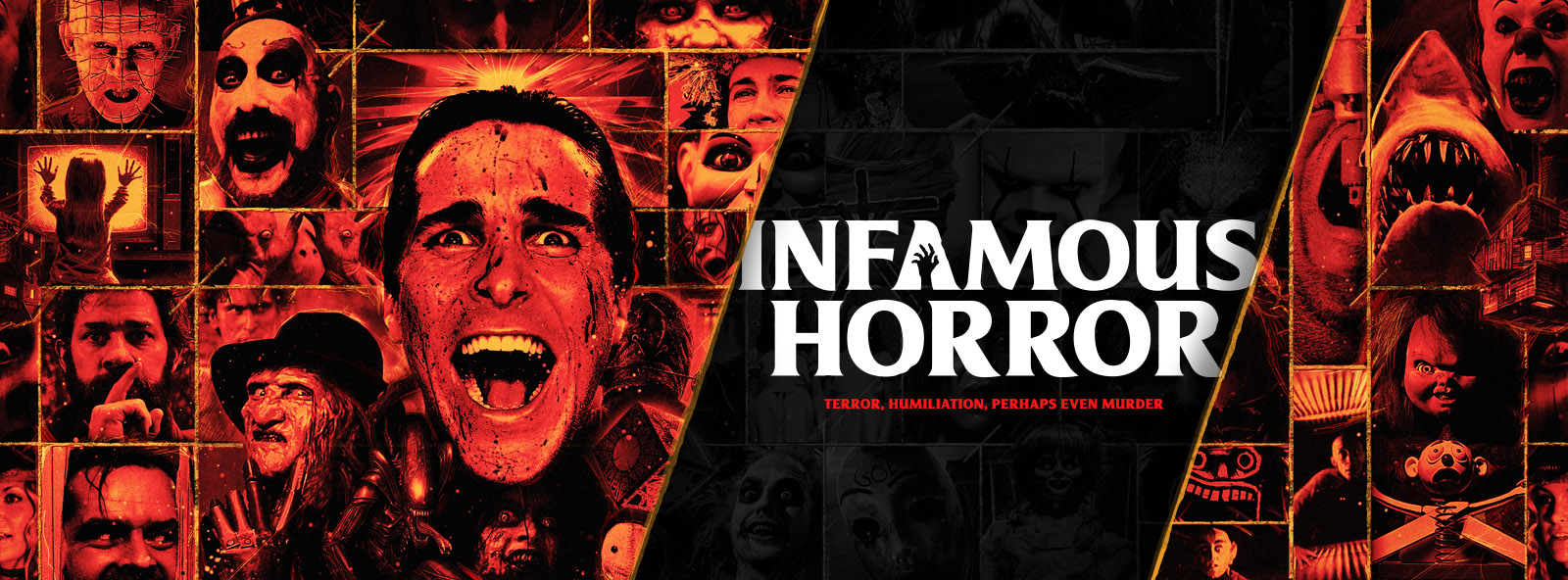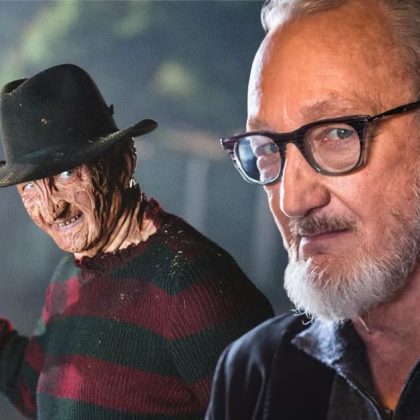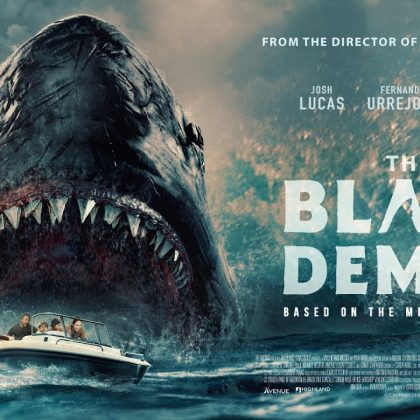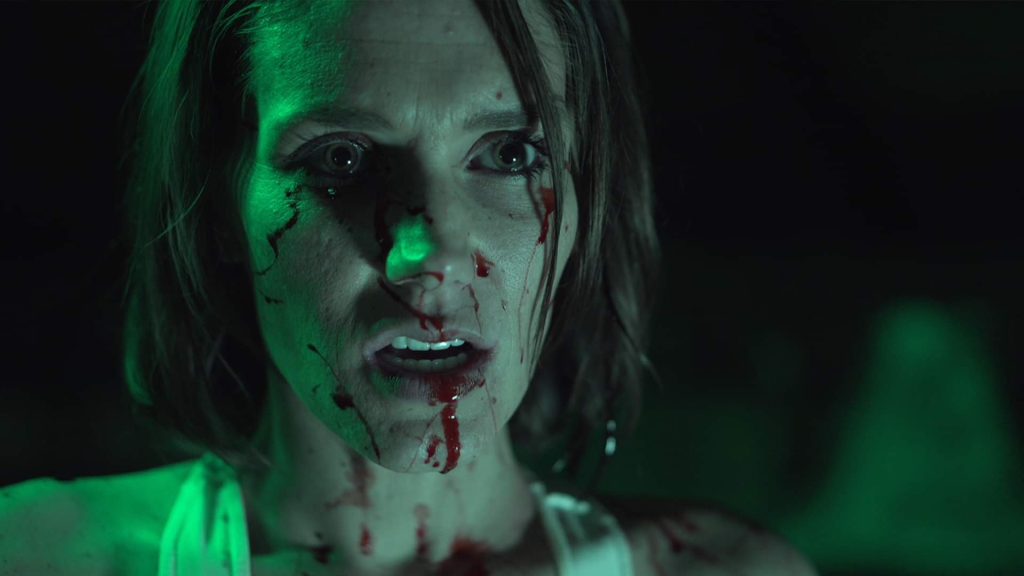
Horror Wasteland Pictures International presents “H.P. Lovecraft’s Witch House,” releasing for the first time in the U.S. on digital and DVD (via Walmart) July 5th! I’m all about cosmic horror – “The Thing,” “In the Mouth of Madness,” “Event Horizon,” “The Void,” “Mandy,” and “The Color Out of Space” are personal favorites.
Here’s the premise for “Witch House”:
Graduate student Alice Gilman (Portia Chellelynn) is running from an abusive past. She seeks refuge in the infamous Hannah House, a historic home with an ominous past. Determined to prove the possibility of alternate dimensions, she unknowingly unlocks a gateway to unimaginable horror. Facing a series of bizarre and violent events, Alice is plagued by nightmarish dreams of these evil entities. Trapped between the fourth dimension and reality, the diabolical truth is revealed as Alice fights for her sanity and her very soul.
The film’s based on Lovecraft’s short story “The Dreams in the Witch House,” first published in the July 1933 edition of Weird Tales. It was shot almost entirely in Indiana’s historic Hannah House, which is known to be haunted, so that immediately piqued my interest (part of me hoped that director Bobby Easley captured a real ghost on footage).
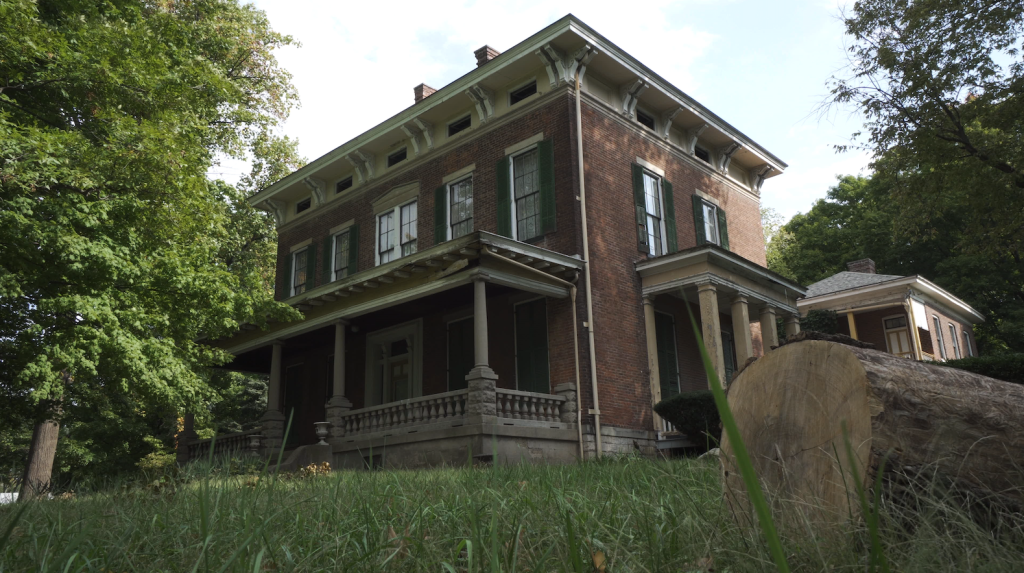
I find it fascinating when a short story is adapted for a full-length feature – look at Clive Barker’s “Candyman.” Or look at “Dagon” – that film totally deviated from Lovecraft’s super-short story, yet the film has a decent following (and a shiny Vestron Blu-ray release). So, I don’t want to shy away from projects that stray a bit from their source material – as long as it keeps the general rules of that world in place. Going into “Witch House,” I wanted a witch, her familiar, and disturbing visions haunting the protagonist.
To prepare for this screening, I re-read Lovecraft’s short story. If you’re familiar with the tale, or if you’d prefer not to read through story points, skip the next section and scroll down to “The Movie.”
The Story
I admire Lovecraft’s ability to weave together a rich, history-filled world in just a few pages. “The Dreams in the Witch House” is no exception. Miskatonic University student Walter Gilman rents a gable room in a house that once harbored Keziah Mason, a witch from the Salem Trials. Keziah had confessed to using lines and symbols to access the fourth dimension. Gilman wanted to crack the mathematical code to open that dimension.
The angles of Gilman’s room start have a hypnotic effect on him, and he dreams. A rat-like creature with a human face appears, known around Arkham as Brown Jenkin. Jenkin is Keziah’s familiar and a messenger between her and the man in black (Satan). Gilman’s dreams feature this creature, soon accompanied by Keziah. Other interdimensional, geometrical entities also start to follow him.
Gilman’s affliction includes: 1) fever, 2) wild dreams, 3) somnambulism, 4) illusions of sounds, 5) a pull toward the sky, 6) sleepwalking, and 7) a pull toward infinite North.
A classic trope used in this tale is the character’s need to dig deeper and deeper until he’s in too far – and discovers exactly what he’s looking for, with consequences (think of Ethan Hawke’s character in “Sinister”). Gilman increasingly feels like he’s being persuaded to do something (join the Devil).
The story escalates when a baby is abducted by the witch and marked as a sacrifice for Sabbath. On Walpurgis Night (the time of the witches’ Sabbath), Jenkin sacrifices the baby, and Gilman falls into a sort of coma. His eardrums rupture (he likely heard the high-pitched call of the void). Later, Gilman is found dead – a rat dug through his body. The house is later condemned and excavated. The bones of Keziah, Jenkin, and countless children are found.
The Movie
Bobby Easley’s “Witch House” is a contemporary adaptation of the classic tale. Gilman is swapped for university student Alice Gilman (her last name a clear nod to the original character). The film opens with a fantastic quote from Lovecraft about how it’s a blessing to not fully understand everything, and that traveling too deep into the infinite (like Gilman) can be dangerous.
Alice’s recent traumatic past is quickly revealed, and her professor points her to a house close to the university where she can lodge and hide for a while. Hannah House is basically a massive funeral home style mansion embellished with Victorian furnishings. The head of the house, Etta (Shonda Laverty), lets her stay in the attic and warns there might be an occasional mouse (mice factor greatly into the original story, so I’m glad Easley kept that element in).
We’re introduced to other tenants in the house – Etta’s brother Joe, who always carries a crucifix (a nod to tenant Joseph Mazurewicz from the original story), and Etta’s niece Tommi (Julie Anne Prescott), who befriends Alice. Tommi’s upset because Etta could’ve given her a better room, but Alice insists the attic is where she needs to be; she’s fascinated by its geometric proportions.
Portia Chellelynn plays Alice as easy to like, and her personality gradually shines through, especially once she gets to Hannah House. I didn’t know if her character was going to be depicted as frightened throughout the entire film – after all, she underwent some intense trauma before arriving there. I also wondered if she’d be stuck in bed dreaming the whole movie. Like Gilman, that stuff’s certainly there, but Alice is given enough time out of the attic and out in civilization, attending classes, meeting her professor, etc. And like Gilman, Alice is a student who’s fascinated by mathematics. She wants to prove that geometrical structures are the key to accessing other dimensions.
Alice finds something wrapped tightly under the attic floorboards. Curiosity gets to the better of her and she opens it. (I’m thinking back to 2013’s “Evil Dead” where the character Eric cuts through a book wrapped in barbed wire – just NO – why would you? But I think it’s that hunger to discover something, and in that moment, curiosity takes over you and you don’t think about the consequences of what could happen. You want to stare into the infinite abyss, even if it stares back). The contents of the parcel fuels Alice’s obsession through the rest of the film.
Unlikely Ally
Tommi is important in that she acts as a bridge for Alice to learn more about Keziah and the house’s history. Keziah’s history here deviates from Lovecraft’s version, but she’s still a witch who sacrifices children. Tommi shares historical documents pertaining to Hannah House and Alice peeks around, finding blueprints and articles about a murder that took place at the house.
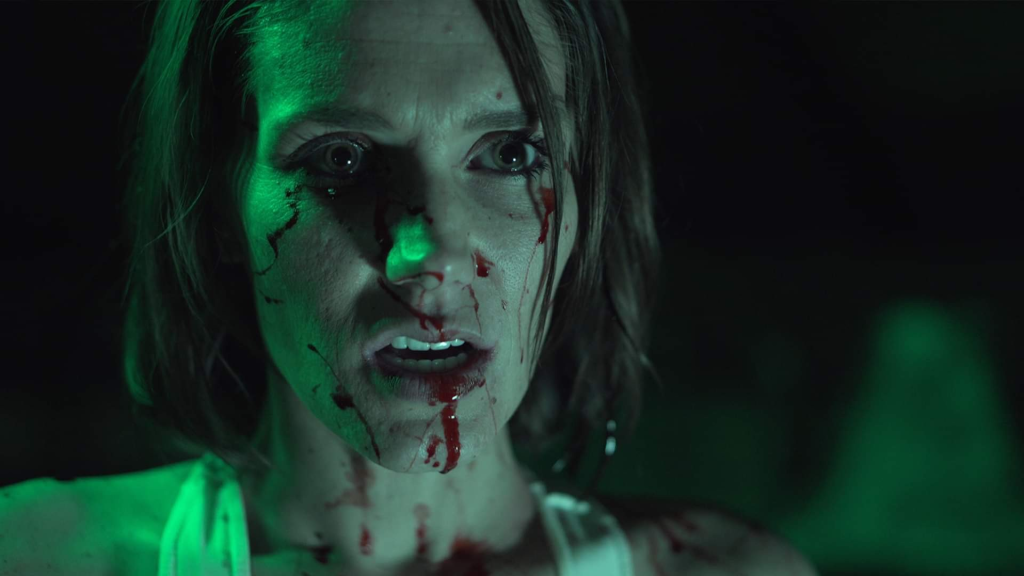
There’s a surprising love scene between Alice and Tommi. The scene doesn’t seem overly gratuitous (Alice does appear in her underwear often but in the film’s defense, her attacks often happen at night while she’s sleeping). Early on there’s an emphasis of chemistry between Alice and Tommi, and I’m all for LGBTQ+ representation onscreen. It does feel like a random subplot, but they make Tommi super likable and fun enough that I was glad Alice was given a love interest and ally, especially after what she went through.
The Plot Thickens
There are two scenes where children are abducted. This is similar to Lovecraft’s tale in that the problem goes beyond the confines of the house. In the original story, the abduction doesn’t happen until much later, but here it’s shown that someone’s preparing early for Walpurgis Night (a night not mentioned in the film).
Alice’s dreams don’t start fast enough for me, but after some world-building and the establishing of a connection between Alice and Tommi, Alice starts having colorful dreams like Gilman – distorted images of candles, dark scriptures, a glance of Keziah and Brown Jenkin, a rat biting Alice’s wrist. (Note: the makeup department did a stellar job bringing Jenkin to life – a creepy human face attached to a hunched, rat-like body. Jenkin’s actions differ from Lovecraft’s version in that he talks to Alice.) Alice can’t really do anything in this dream except stare open-mouthed and shake. This relates to Gilman’s experience of feeling out of his body, out of proportion with himself. The rat’s bite on her wrist leaks her blood onto a document (a reference to Gilman signing the Devil’s contract).
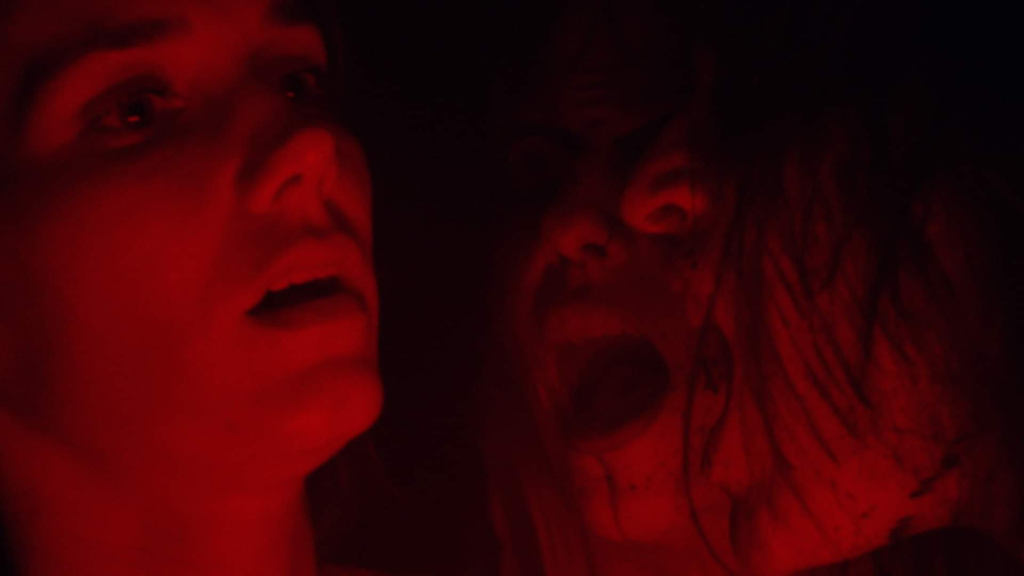
Like Gilman, Alice isn’t alarmed by her dreams. She’s more curious than anything and uses the internet to do research. This film takes place in present day, so Alice has the advantage of using her phone’s light and the internet. The big no-no for me is when Alice starts to draw the designs in chalk on the attic floor. That’s just asking for trouble! Her actions really do replicate Gilman’s in that she willingly places herself in dangerous situations.
Deviating a bit from the story, we do get a pretty cool Sabbath scene; it’s accurate to many “witches partying under the moonlight around a roaring fire” scenes depicted in other horror films. Alice soon discovers a horrible truth, and it’s one of the biggest deviations from the story. But I think maybe it strengthens Keziah’s motivation for wanting her? In the original tale, Gilman was recruited sort of [shrugs] just because? But here, Alice has a role to play for the “darker good.” This dark revelation is tangible real-world evidence that what’s happening to Alice isn’t a game or something to be dismissed, and I think it finally dawns on her that it’s no longer so simple as solving a mathematical equation.
Minor Movie Critiques
• The lighting in certain scenes is so dark, it’s difficult to see anything (but maybe that’s the point – you have to imagine something’s in the shadows). I could’ve adjusted the settings on my TV but still, the darkness was an issue that sometimes impacted my viewing experience.
• At one point, Alice gets a bloody nose. I think it would’ve been more in tune with the story to have her bleed from her ears, as Gilman experiences distressing high-frequency noises from the fourth dimension.
• Someone Alice has been hiding from somehow finds her, and we don’t get an explanation.
• A character is compelled to cut off his own head. I don’t know how someone can actually fully cut off their own head with a straight razor. Cosmic strength, perhaps?
• We don’t see any of the polyhedron creatures. I do think it would’ve been difficult to show that in a lower-budget independent film as it requires CGI and/or other special effects.
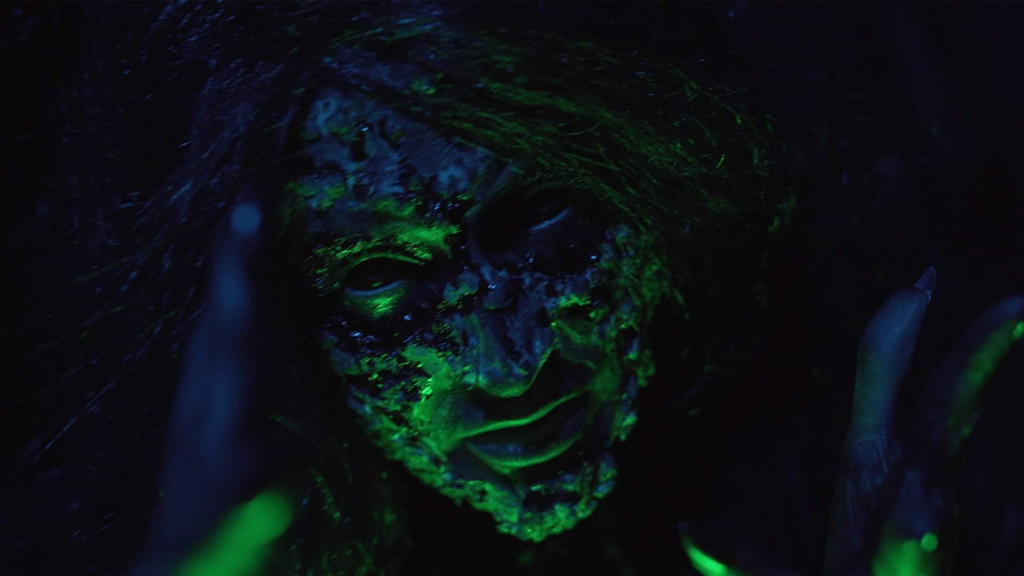
Closing Thoughts
“Witch House” contains plenty of Lovecraftian elements and overall cosmic horror vibes that I think it qualifies for the “H.P. Lovecraft’s” designation in the title – but it certainly deviates with a huge plot point not found in the original. It does make Alice’s role in Keziah’s game much greater and it’s more believable that a giant army of witches, mice, and other creatures are after her. The film also gradually becomes bloodier. I do like that in Lovecraft’s tale he suggests there’s a Sabbath and he suggests that Gilman, for instance, had a tunnel dug through him by a rat, but we never see it; I think the imagination can be a powerful thing. But I also think some of these gorier scenes will appeal to horror fans looking for that. I’d still love to see an on-the-nose accurate adaptation of the story (or maybe one exists? I haven’t done my research). I really enjoyed Portia Chellelynn’s performance, and her motivation was very much in tune with Gilman’s from the original. I would’ve liked to see the army of strange barrel creatures with starfish arms, but I don’t see how they could’ve pulled that off here without a higher budget. I think this is a fine addition to the cosmic horror genre and you can tell the actors involved wanted to be there and were all Lovecraft fans.
Bret Laurie is an editor, writer, and longtime horror fan in Massachusetts. He contributes film reviews regularly and supports independent horror films through social media. His flash-fiction tale “The Shell” is featured in the DarkLit Press anthology “Beach Bodies.”


